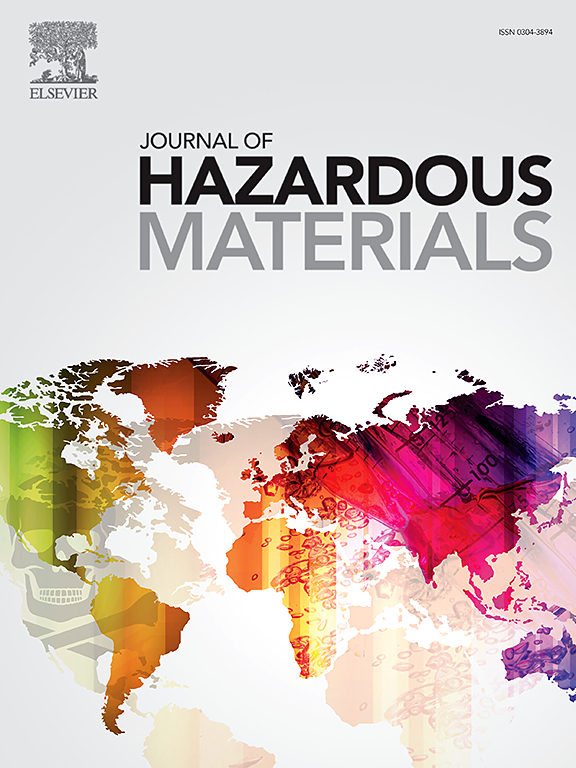PFAS removal through foam harvesting during wastewater aeration
IF 12.2
1区 环境科学与生态学
Q1 ENGINEERING, ENVIRONMENTAL
引用次数: 0
Abstract
Aeration in wastewater treatment plants (WWTPs) is used for removal of organic matter and nutrients. Here we show that aeration can also lead to removal of per- and polyfluoroalkyl substances (PFAS), by foam fractionation. Rising air bubbles facilitate air-liquid interfacial adsorption of PFAS and spontaneous foaming occurrence. This suggests that some modifications to conventional treatment processes that enable foam removal may be sufficient to achieve PFAS removal at WWTPs. However, high suspended solids concentrations in the mixed liquor suspension within the aerated bioreactors may complicate PFAS removal in foam fractionation, as both air bubbles and suspended biomass retain PFAS. This study explored the feasibility of foam fractionation for PFAS removal and enrichment using actual mixed liquor suspensions with typical total suspended solids concentrations and WWTP-relevant PFAS concentrations. The mechanisms involved in PFAS removal and enrichment in both aqueous and solid phases were suggested, and a mass balance analysis was performed to show PFAS distribution between the two phases. Overall, PFAS removal from the aqueous phase ranged from 70 % to 100 % for PFAS with perfluorinated carbon numbers ≥ 6, while PFAS with perfluorinated carbon numbers < 6 showed low removal of < 20 %. PFAS removal from the solid phase ranged from 20 % to 60 %, depending on the PFAS species. This study represents an ongoing effort to advance the potential implementation of foam fractionation in aerated bioreactors at WWTPs.

在污水曝气过程中通过泡沫收集去除PFAS
在污水处理厂(污水处理厂)曝气是用于去除有机物和营养物质。在这里,我们表明曝气也可以导致去除全氟烷基和多氟烷基物质(PFAS),通过泡沫分馏。上升的气泡有利于PFAS在气液界面的吸附和自发发泡的发生。这表明,对常规处理工艺进行一些修改,使泡沫去除,可能足以在污水处理厂实现PFAS的去除。然而,曝气生物反应器内混合液悬浮液中的高悬浮固体浓度可能会使泡沫分馏中PFAS的去除复杂化,因为气泡和悬浮生物质都保留了PFAS。本研究利用典型总悬浮固体浓度和wwtp相关PFAS浓度的实际混合液悬浮液,探讨了泡沫分馏去除和富集PFAS的可行性。提出了PFAS在水相和固相中去除和富集的机理,并进行了质量平衡分析,以显示PFAS在两相中的分布。总体而言,对于全氟碳数≥6的PFAS,水相中PFAS的去除率为70%至100%,而全氟碳数为<;6的<去除率低;20%。PFAS从固相的去除率在20%到60%之间,这取决于PFAS的种类。本研究代表了在污水处理厂曝气生物反应器中推进泡沫分馏的潜在实施的持续努力。
本文章由计算机程序翻译,如有差异,请以英文原文为准。
求助全文
约1分钟内获得全文
求助全文
来源期刊

Journal of Hazardous Materials
工程技术-工程:环境
CiteScore
25.40
自引率
5.90%
发文量
3059
审稿时长
58 days
期刊介绍:
The Journal of Hazardous Materials serves as a global platform for promoting cutting-edge research in the field of Environmental Science and Engineering. Our publication features a wide range of articles, including full-length research papers, review articles, and perspectives, with the aim of enhancing our understanding of the dangers and risks associated with various materials concerning public health and the environment. It is important to note that the term "environmental contaminants" refers specifically to substances that pose hazardous effects through contamination, while excluding those that do not have such impacts on the environment or human health. Moreover, we emphasize the distinction between wastes and hazardous materials in order to provide further clarity on the scope of the journal. We have a keen interest in exploring specific compounds and microbial agents that have adverse effects on the environment.
 求助内容:
求助内容: 应助结果提醒方式:
应助结果提醒方式:


